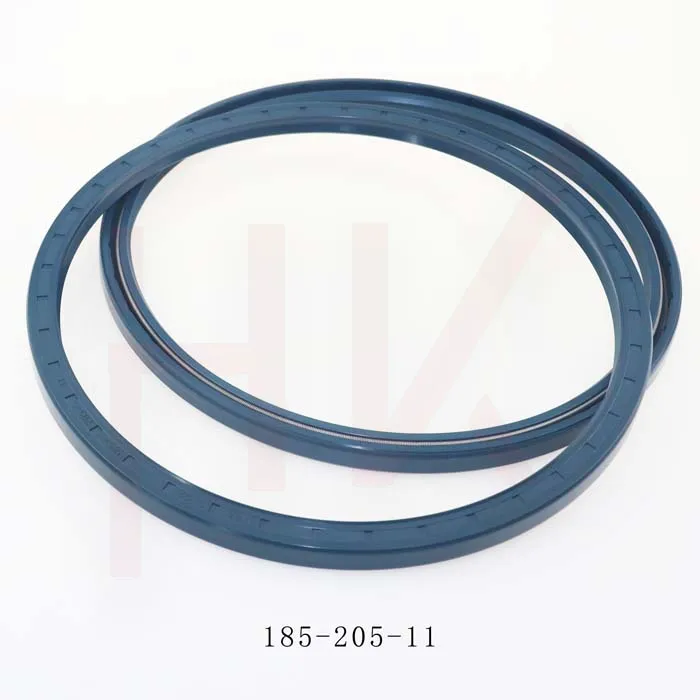Dec . 04, 2024 05:49 Back to list
Hydraulic Cylinder Seal Kit Material Selection for Optimal Performance and Durability
Understanding Hydraulic Cylinder Seal Kit Materials
Hydraulic cylinders are an essential component of many machines, providing the force and motion needed to perform various tasks in industries ranging from construction to manufacturing. A crucial part of these hydraulic systems is the hydraulic cylinder seal kit, which ensures the integrity and efficiency of the hydraulic system by preventing leaks and maintaining pressure. The choice of materials used in the seal kit is vital, as they directly influence the performance, durability, and reliability of the hydraulic cylinders.
Common Materials Used in Hydraulic Seal Kits
1. Nitrile Rubber (NBR) Nitrile Rubber is one of the most commonly used materials in hydraulic seals. Known for its excellent resistance to oil, fuel, and other hydraulic fluids, NBR is the go-to choice for a wide range of temperatures, typically between -40°C to 100°C (-40°F to 212°F). Its toughness and resilience make it suitable for high-pressure applications, although it may not perform well under extreme heat or with certain types of fluids.
2. Fluoroelastomer (FKM) Fluoroelastomers, such as Viton™, are another popular choice for hydraulic seals, especially in high-temperature and aggressive chemical environments. FKM exhibits superior resistance to heat, ozone, and a variety of chemicals, making it ideal for applications where NBR may fail. Its operating temperature range can extend from -20°C to 200°C (-4°F to 392°F), making it suitable for demanding situations where other materials might degrade.
3. Polyurethane (PU) Polyurethane is often utilized in specific seal applications where high abrasion resistance, low friction, and high strength are required. It has excellent elasticity, which allows for a snug fit in hydraulic cylinders, helping to reduce the likelihood of leaks. However, it is susceptible to hydrolysis, so it should not be used in wet environments or with moisture-laden fluids.
4. PTFE (Polytetrafluoroethylene) Known by the brand name Teflon™, PTFE is renowned for its non-stick properties and resistance to chemical exposure. While it has a high operating temperature range, it is less elastic than rubber materials and is often used in conjunction with other elastomers in sealing solutions. PTFE seals are ideal for applications involving harsh chemicals and high temperatures, but their low friction characteristics can lead to inadequate sealing if not designed properly.
5. Metallic Seals In certain high-performance applications, metallic seals made from materials like stainless steel or brass may be utilized. These seals are often integrated with elastomeric components to provide a robust solution for sealing under extreme pressure and temperature conditions.
hydraulic cylinder seal kit material

Factors Influencing Material Selection
When selecting materials for hydraulic cylinder seal kits, several factors must be taken into account
- Fluid Compatibility The chosen seal material must be compatible with the hydraulic fluids used in the system. Compatibility affects the seal's lifespan and overall performance.
- Temperature Range The operating temperature range of the hydraulic system is crucial, as extreme temperatures can lead to material failure.
- Pressure Ratings The pressure requirements of the hydraulic system dictate the strength and durability of the seal materials.
- Environment The surrounding environment—such as exposure to dust, moisture, or aggressive chemicals—can influence material choice.
Conclusion
In conclusion, the material selection for hydraulic cylinder seal kits plays a critical role in ensuring the efficiency and longevity of hydraulic systems. By understanding the characteristics of various materials such as nitrile rubber, fluoropolymer, polyurethane, and PTFE, engineers and operators can make informed decisions that enhance the performance of their hydraulic equipment. Evaluating the specific application requirements, including fluid compatibility, temperature ranges, and environmental considerations, will help in choosing the right seal kit material, ultimately optimizing the hydraulic system's performance.
-
TCN Oil Seal Metal Ring Reinforcement for Heavy Machinery
NewsJul.25,2025
-
Rotary Lip Seal Spring-Loaded Design for High-Speed Applications
NewsJul.25,2025
-
Hydraulic Cylinder Seals Polyurethane Material for High-Impact Jobs
NewsJul.25,2025
-
High Pressure Oil Seal Polyurethane Coating Wear Resistance
NewsJul.25,2025
-
Dust Proof Seal Double Lip Design for Construction Equipment
NewsJul.25,2025
-
Hub Seal Polyurethane Wear Resistance in Agricultural Vehicles
NewsJul.25,2025
-
The Trans-formative Journey of Wheel Hub Oil Seals
NewsJun.06,2025
Products categories
















